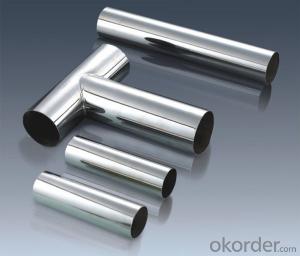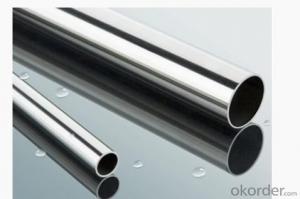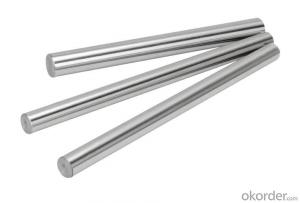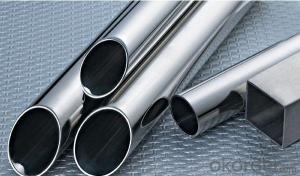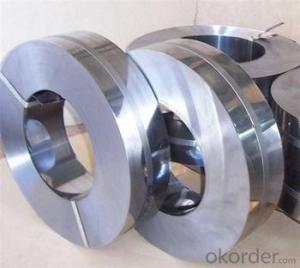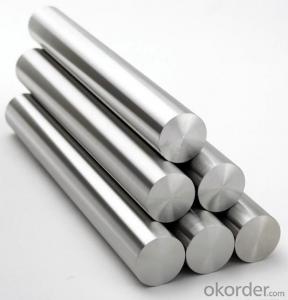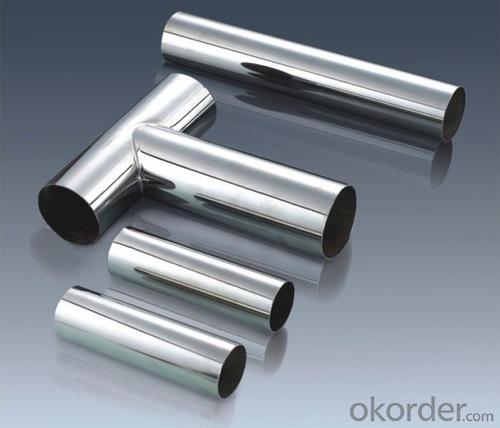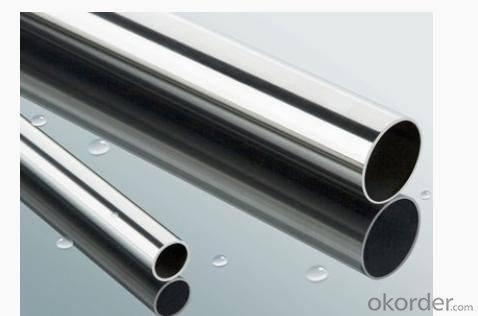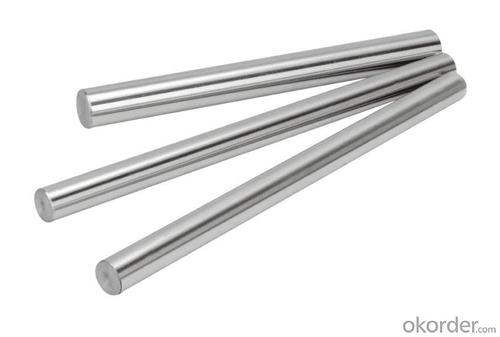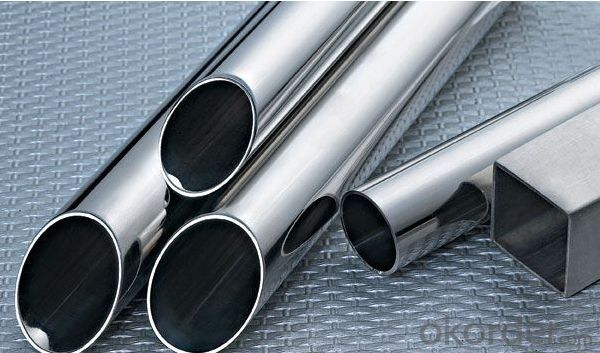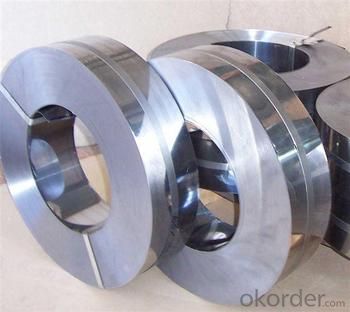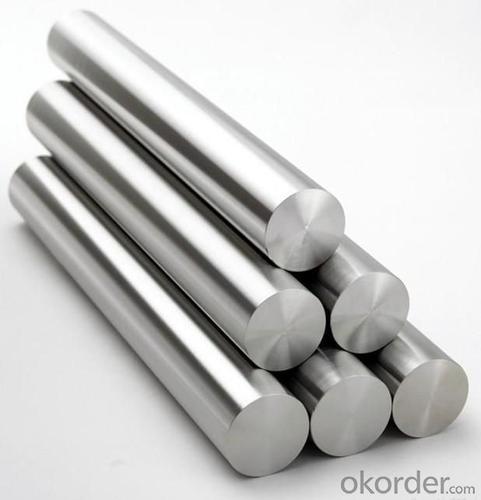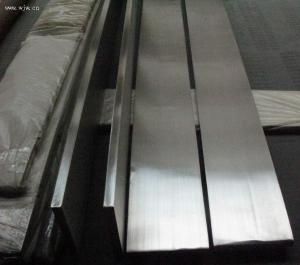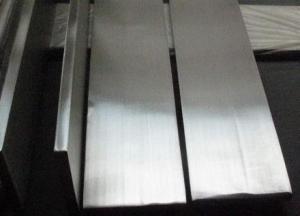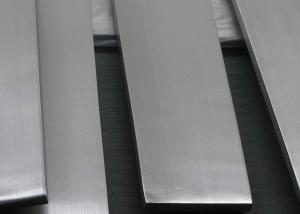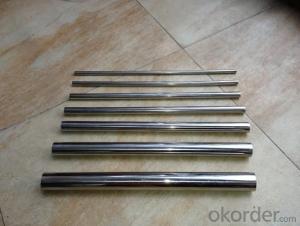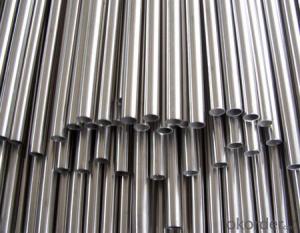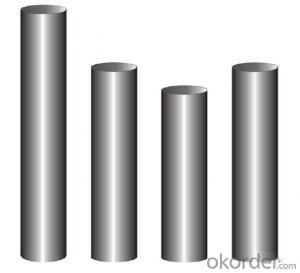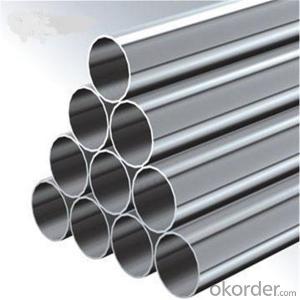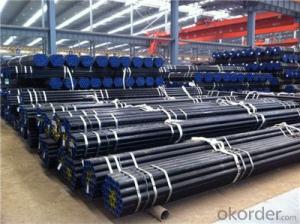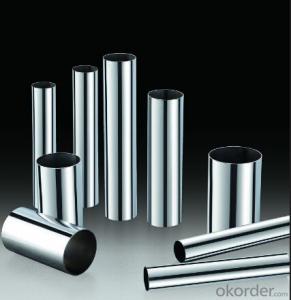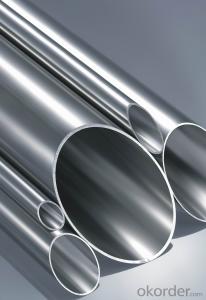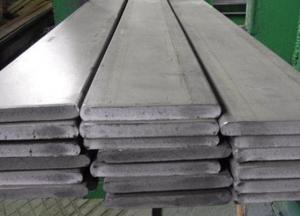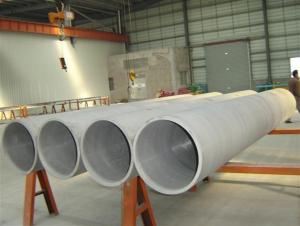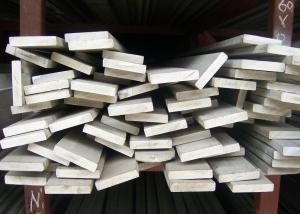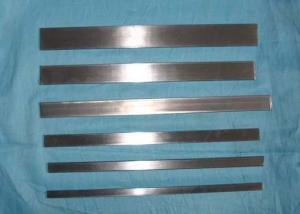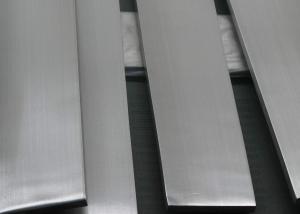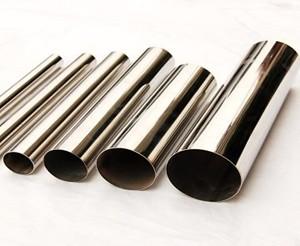Stainless Steel tube 304 with finest quality
- Loading Port:
- Shanghai
- Payment Terms:
- TT OR LC
- Min Order Qty:
- 1000 m.t
- Supply Capability:
- 1000000 m.t/month
OKorder Service Pledge
OKorder Financial Service
You Might Also Like
Stainless steel 304
Product Information of stainless steel:
- Width: customized
- Surface: 2B/BA/6K/8K/NO.4/HL.
- Thickness: 0.3mm - 3.0mm.
- Delivery time: 15-25 days.
- Length : As customer's requirement.
- Package: With export standard packing or customize packing.
- Payment Terms: T/T (30% deposit pay in advance and the balance before shipment) , irrevocable L/C.
Company advantage:
-Top Equipments, Leading In The Industry.
- Professional Team, Leading Innovation.
- Huge Supply Capacity Advantage, Timely and Effective Delivery.
- Modern Logistic, Fact and Convenient.
- Precise Manufacturing, Exquisite Products.
- Serve People, Create Value.
- Dimensional Network, Powerful Expansion.

- Q: What are the different types of stainless steel pipe couplings?
- There are several different types of stainless steel pipe couplings available in the market, each offering unique features and functionalities. Some of the common types include: 1. Compression couplings: These couplings are designed to provide a tight and secure connection by compressing the pipe ends together using a compression nut. They are easy to install and suitable for both rigid and flexible pipe systems. 2. Flanged couplings: These couplings have flanges on both ends, which can be bolted together to create a strong and leak-proof connection. Flanged couplings are commonly used in industrial applications where high pressures and temperatures are involved. 3. Grooved couplings: These couplings consist of two segments that grip the pipe ends when tightened, creating a reliable and flexible connection. They are often used in fire protection systems and HVAC applications due to their ease of installation and ability to withstand vibration and movement. 4. Threaded couplings: As the name suggests, these couplings have threads on the inside, allowing them to be screwed onto the pipe ends. They are commonly used in low-pressure applications and are easy to assemble and disassemble. 5. Quick connect couplings: These couplings feature a quick-connect mechanism that allows for easy and rapid installation without the need for tools or additional components. They are often used in plumbing and irrigation systems. 6. Welded couplings: These couplings require the pipe ends to be welded together to create a permanent and robust connection. They are commonly used in high-pressure and high-temperature applications where a strong joint is essential. It is important to select the appropriate type of stainless steel pipe coupling based on the specific requirements of the application, such as the operating conditions, pipe material, and system design. Consulting with a professional or referring to industry standards can help ensure the right choice is made.
- Q: Can stainless steel pipes be used for oil and gas transportation?
- Yes, stainless steel pipes can be used for oil and gas transportation. Stainless steel is highly resistant to corrosion and can withstand high pressures and extreme temperatures, making it suitable for transporting oil and gas safely and efficiently.
- Q: Can stainless steel pipes be used for refrigeration systems?
- Yes, stainless steel pipes can be used for refrigeration systems. Stainless steel is highly resistant to corrosion and can withstand low temperatures, making it an ideal choice for refrigeration applications. It provides excellent durability, longevity, and hygiene, ensuring the smooth and efficient operation of refrigeration systems.
- Q: Are stainless steel pipes suitable for chemical processing?
- Yes, stainless steel pipes are suitable for chemical processing. Stainless steel is known for its excellent corrosion resistance, making it an ideal choice for handling different chemicals in various processing industries. Stainless steel pipes are resistant to both organic and inorganic chemicals, including acids, alkalis, and solvents. They can withstand high temperatures and pressures, making them suitable for handling aggressive chemicals and maintaining the integrity of the process. Stainless steel also offers hygienic properties, as it is non-porous and easy to clean, ensuring the purity of the chemicals being processed. Additionally, stainless steel pipes have a long lifespan and require minimal maintenance, making them a cost-effective option for chemical processing applications.
- Q: What are the different types of stainless steel pipe hangers?
- There are several different types of stainless steel pipe hangers, including clevis hangers, u-bolt hangers, split ring hangers, and riser clamps.
- Q: Can stainless steel pipes be pickled?
- Yes, stainless steel pipes can be pickled. Pickling is a process that removes surface impurities and oxides from the stainless steel, resulting in a clean and corrosion-resistant surface. This process is commonly used to prepare stainless steel pipes for further treatments or applications.
- Q: What's the easiest way to distinguish between stainless steel 202 and 304?
- They all belong to the austenitic stainless steel, 202 with Mn and N to replace part of nickel, so as to obtain the mechanical properties and good corrosion resistance, is a new type of stainless steel nickel, his strength at room temperature is higher than 304, there are no good oxidation resistance and magnetic strength in medium temperature below 800 degrees. Potions don't fly
- Q: What are the common corrosion issues with stainless steel pipes?
- There are a few common corrosion issues that can occur with stainless steel pipes. One of the most common is called pitting corrosion, which is characterized by small pits or holes that form on the surface of the pipe. Pitting corrosion is often caused by exposure to chloride ions, which can come from substances like saltwater or certain types of cleaning agents. Another common corrosion issue is crevice corrosion, which occurs in the narrow gaps or crevices between the pipe and other surfaces. These gaps can trap moisture or other corrosive substances, leading to localized corrosion. Crevice corrosion is often seen in areas where the pipe is joined or in areas with poor ventilation. Stress corrosion cracking is another common problem with stainless steel pipes. It occurs when the material is exposed to a combination of tensile stress and a corrosive environment. This can cause cracks to develop in the pipe, which can lead to leaks or structural failure. Finally, galvanic corrosion is a common issue when stainless steel pipes are in contact with other metals. When two different types of metals are in contact in the presence of an electrolyte, such as water, a galvanic cell can form and cause corrosion. To prevent this, it is important to use appropriate insulation or isolation techniques when connecting stainless steel pipes to other metals. Overall, while stainless steel is known for its corrosion resistance, it is not completely immune to corrosion. Understanding these common corrosion issues and taking preventive measures can help ensure the longevity and reliability of stainless steel pipes.
- Q: How do stainless steel pipes compare to concrete pipes?
- Stainless steel pipes offer several advantages over concrete pipes. Firstly, stainless steel pipes have a higher strength-to-weight ratio, making them lighter and easier to handle during installation. They are also more resistant to corrosion and have a longer lifespan than concrete pipes. Additionally, stainless steel pipes have smoother inner surfaces, enabling better flow rates and reducing the likelihood of blockages. Lastly, stainless steel pipes are more flexible and can withstand temperature variations, making them suitable for a wider range of applications compared to concrete pipes.
- Q: Can stainless steel pipes be electropolished?
- Yes, stainless steel pipes can be electropolished. Electropolishing is a process that can be applied to stainless steel pipes to enhance their surface finish, remove impurities, and improve corrosion resistance. It involves immersing the pipes in an electrolyte solution and applying an electric current to remove a controlled layer of metal from the surface, resulting in a smooth and polished finish.
Send your message to us
Stainless Steel tube 304 with finest quality
- Loading Port:
- Shanghai
- Payment Terms:
- TT OR LC
- Min Order Qty:
- 1000 m.t
- Supply Capability:
- 1000000 m.t/month
OKorder Service Pledge
OKorder Financial Service
Similar products
Hot products
Hot Searches
Related keywords
